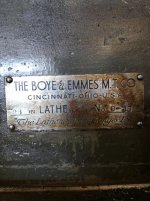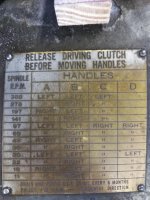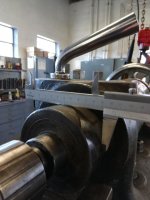Hi,
I work in the shop at the NC DOT. We're getting ready to put on auction our old machine shop equipment, specifically a lathe, milling machine and drill press. We're going to miss them, since we used them frequently. But the "powers that be" have decided they need the space worse than the machines.
I was just curious about their history before they went. Folks here said they came to us from a battleship. Wish there was a way of verifying that. It'd be neat to know. Does anybody know if there is a way to trace serial numbers and find out more history on these machines? They look cool, and have worked great for us. We will miss having them. I've posted pics also.
Thanks,
Bill




I work in the shop at the NC DOT. We're getting ready to put on auction our old machine shop equipment, specifically a lathe, milling machine and drill press. We're going to miss them, since we used them frequently. But the "powers that be" have decided they need the space worse than the machines.
I was just curious about their history before they went. Folks here said they came to us from a battleship. Wish there was a way of verifying that. It'd be neat to know. Does anybody know if there is a way to trace serial numbers and find out more history on these machines? They look cool, and have worked great for us. We will miss having them. I've posted pics also.
Thanks,
Bill


















